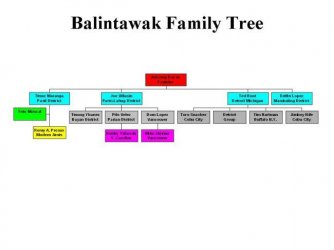Raisin,
Congratualtions on the beginning of your learning of Balintawak.

As the lineages are most likely different, there may be some variations, based upon who you are learning it from and if they changed anything or if their instructor(s) changed anything.
Balintawak Basics:
Proper Grip of the Cane - two fingers of punyo
Stance - oblique
Proper weight placement - the weight comes from the same side as the strike. Blocks are not weight dependant.
The Basic twelve angles of attack
Left hand or off hand basics
-- Left hand placement on the cane to monitor, manage, and delay the opponents cane. This is done with the cane in the webbing of the hand.
-- The Snake -- This is wear you snake your hand from one side of the cane to another.
An example: Hold the cane in your right hand. Place the back of your hand so the base of the hand is on the cane in front of you. Place a little pressure with the cane towards you or in other words into the back of your wrist/hand.
Rotate your hand 180 degrees so that the palm is now facing the cane. Leave your thumb across the cane as you rotate using the palm heel as the pivot point to the other side. The cane goes from being towards the left or straight up to the right. The stick should be in the webbing of your hand.
To come back now, the cane is about 45 degree angle across you. Rotate your hand on the palm heel around the cane, having your hand end up back in the webbing.
-- The Curl -- Cane in the right hand and your left hand in front of you. Stirke the cane at your hand as if you would hit the back of the hand. Your elbow should be in and it should not move much if at all through the practice. As your strike the back of your hand you rotate your hand so that it bends at the wrist (* similiar to how a lady bends her wrist for a gentlemen who greets her in the manner of the Queen's court *) Once the wrist is bent rotate your fingers so they point towards you, and then extend the hand back so it is straight with the arm. Your stick should be below your hand.
To come back you reverse the process, start with the palm facing you, bending the fingers/hand in so the fingers point towards you, rotate the hand away from you so the palm is out and then straighten your hand.
This should be done at a slow speed at first, to get the feel and timing or your cane moving in through the palce your hand just was. Your hand "Curls around" and avoids being hit.
This then leads to the Abecedario template where the instructor feeds the angles 1 through 12 in order, and the student blocks and counter strike on the same side as the block was on.
After the student becomes proficient with the Abecedario then the Seguidas is taught. This is where the instructor strikes the angles one through 12 in a random manner to mix up the strikes and for the student to block.
Then you beginning teaching some techniques, that you can integrate into the Seguidas. Technically this is Corraidas, yet I refer to it as Baby Corraidas as you are just learning how to stand or walk, as you do Seguidas and then you do the new technique and then go back to Seguidas.
I hope this helps a little.
Best regards

